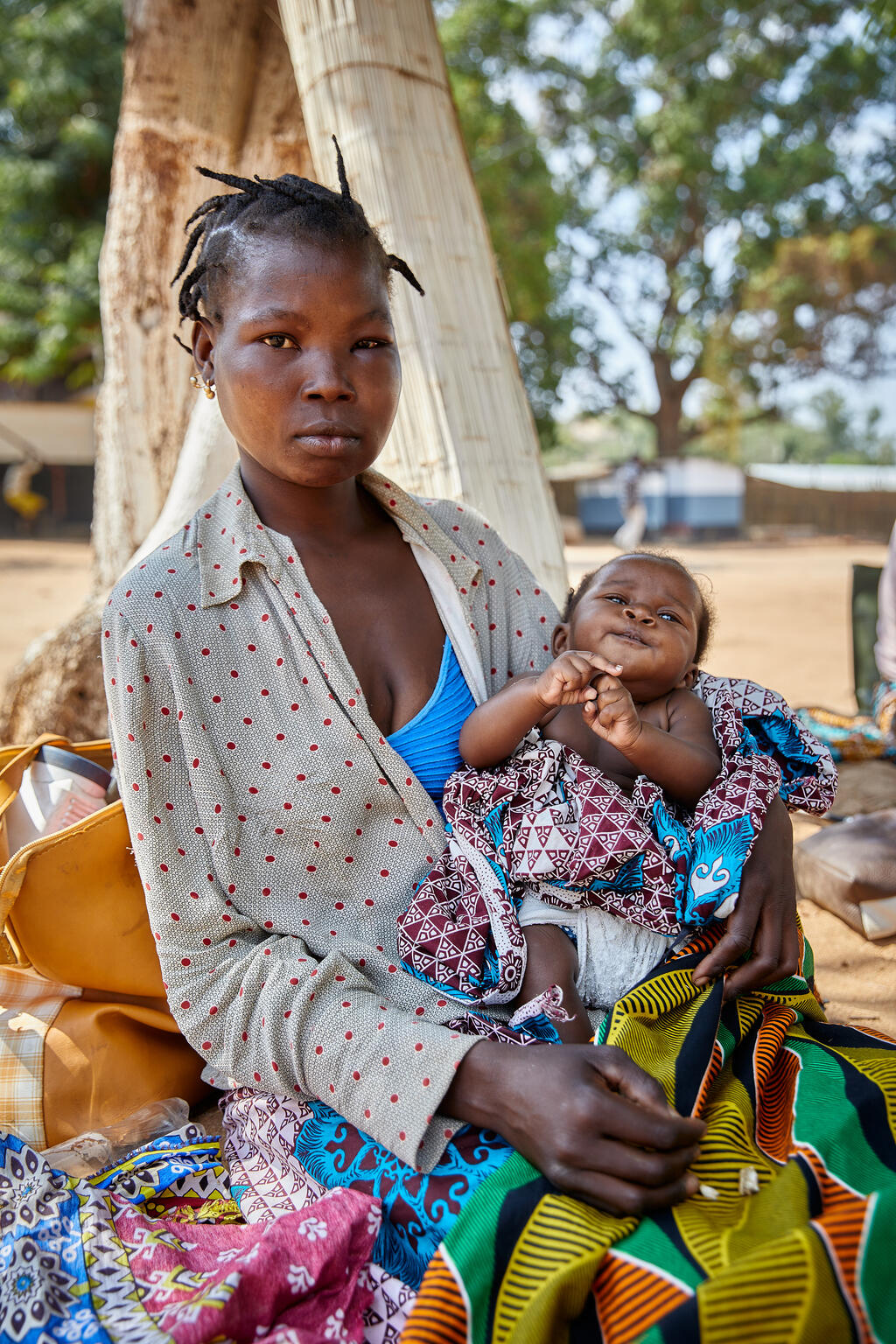Climate change
The problem
The global failure to confront the climate crisis – the greatest threat of this generation – has created a child rights crisis. It is jeopardizing every child’s fundamental right to health and well-being.
Approximately 1 billion children – nearly half of the world’s children – live in extremely high-risk countries.
A child born today will face an increased risk from severe floods, prolonged droughts, heat stress and changing patterns of disease. Weather-related disasters have displaced at least 43 million children over the last six years and destroyed critical infrastructure, crops and contaminated or disrupted water supplies. As temperatures go up, harvests will shrink, leading to food insecurity, higher food prices and malnutrition in children. Rising temperatures and changing rainfall patterns will impact the spread of infectious diseases, including malaria and dengue. Climate change is expected to worsen air quality with increased ground-level ozone and wildfires.
The health and future of children depend on tackling the triple planetary crisis that is interlinked: climate change, pollution and biodiversity loss.
Our success or failure in tackling the climate crisis will be judged by two numbers: Keeping 1.5 degrees promise alive and protecting the 1 billion children's lives that are in jeopardy from this crisis.
1
billion
nearly half of the world’s children – live in extremely high-risk countries.
The loss of life and livelihoods caused by unmanaged climate chaos in the present - driven by historic emissions - is a grave intergenerational injustice borne by children... It is now time for world leaders to take seriously their responsibilities not only to listen to young people, but to act to protect vulnerable children facing climate chaos, especially the under 10s.
Kitty van der Heijden, UNICEF Deputy Executive Director, at the conclusion of COP28
Pregnant women, newborns and children face distinct risks from climate change-related health impacts, due to a host of physiological, clinical, social and behavioural factors.
Children's unique vulnerabilities

This puts children at a greater risk of developing respiratory illnesses or making existing one’s worse when exposed to air pollution, including increased ground-level ozone and wildfires. More than 1,000 newborns deaths daily are attributable to air pollution.
Pregnant women, infants and young children are more susceptible to the effects of extreme heat. Infants are less able to sweat to cool off their bodies when exposed to extreme heat. Heat stress increases the risk of being born with congenital defects and experiencing heat-related illnesses leading to chronic lifelong issues.
Children are less able to fight off infections effectively whether from contaminated food and water or from vector-borne diseases. Currently, childen under the age of 5 account for approximately 80 per cent of malaria deaths. Diarrhoeal diseases are the second leading cause of child deaths in the same age group.
Children are particularly vulnerable to the consequences of food insecurity due to their rapid growth and development. Insufficient access to nutritious food can lead to malnutrition, impair cognitive development and contribute to other health problems.
Children rely on adults for care and protection. In a disaster, they are more susceptible to injuries (e.g., drowning) or increased vulnerability due to separation from caregivers. Caregivers ensure children drink enough water, have access to nutritious food and are protected from harm when children face the stresses imposed by climate change.
What partners can do
Together we must ensure deep, rapid, sustained, and equitable reduction in greenhouse gas emissions to reduce global warming and protect children at every step of the way. We need to keep the 1.5 degree promise alive.
Leaders and the international community must place child health and well-being at the center of climate policy, action and investment at all levels, so that their unique needs and rights are respected, promoted and considered in all aspects of climate action. To protect child health and well-being, we must focus on:
- Saving lives and protecting the health and well-being of children through an effective emergency response that is in line with the Core Commitments for Children.
- Investing in new climate and health services to improve awareness and capacities of caregivers and service providers, such as those for mitigating cases of heat-related illnesses in children.
- Strengthening climate-resilient primary healthcare services, including investing in safe and green healthcare facilities, community health services, and early warning systems.
- Promoting actions that both reduce carbon emissions and improve child health and well-being, such as addressing the sources of air pollution and strengthening school health programmes that focus on healthy diets, lifestyles, and environments.
- Scaling up investments and action in sectors that determine child health outcomes, such as water and sanitation, food systems, social protection and disaster risk reduction.
- Improving access to substantial and new financing for climate and health programmes that prioritize essential services, by embedding child health and well-being across climate policies and strategies at all levels, which is still largely lacking.
Read more about UNICEF’s messaging at COP28 on children’s rights to a safe and clean environment and our joint call to action with WHO and UNFPA for protecting maternal, newborn and child health from climate change impacts.